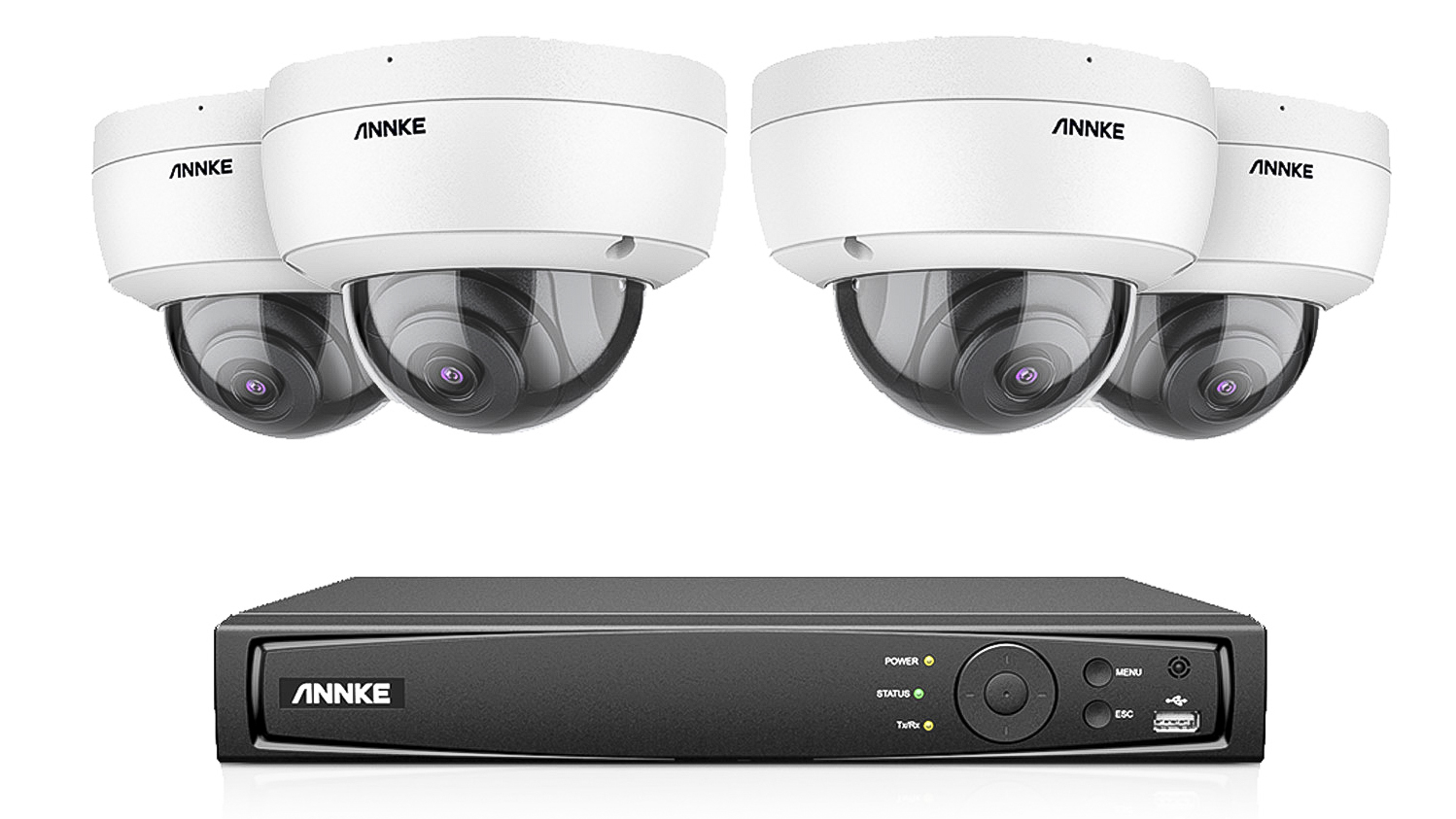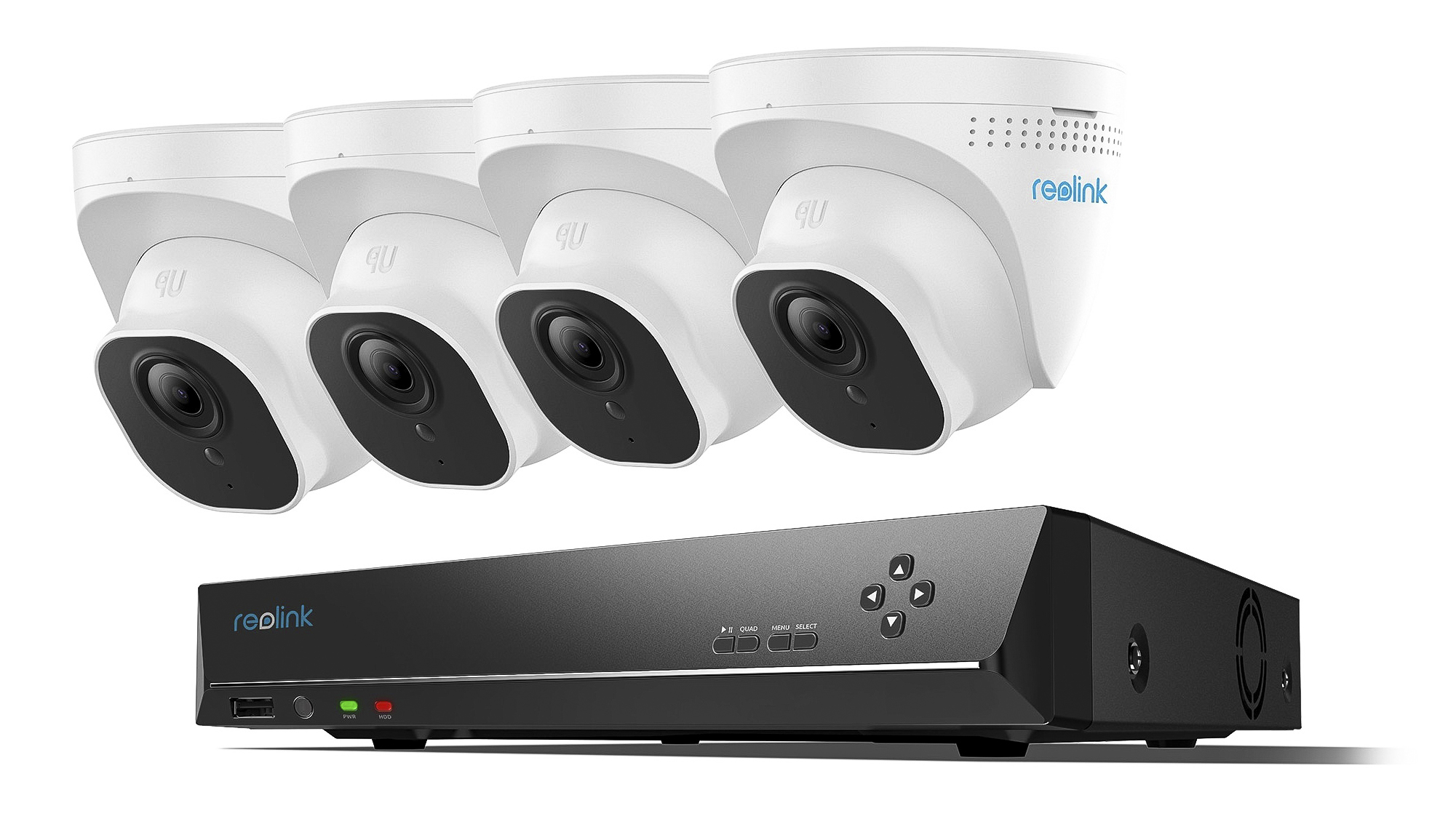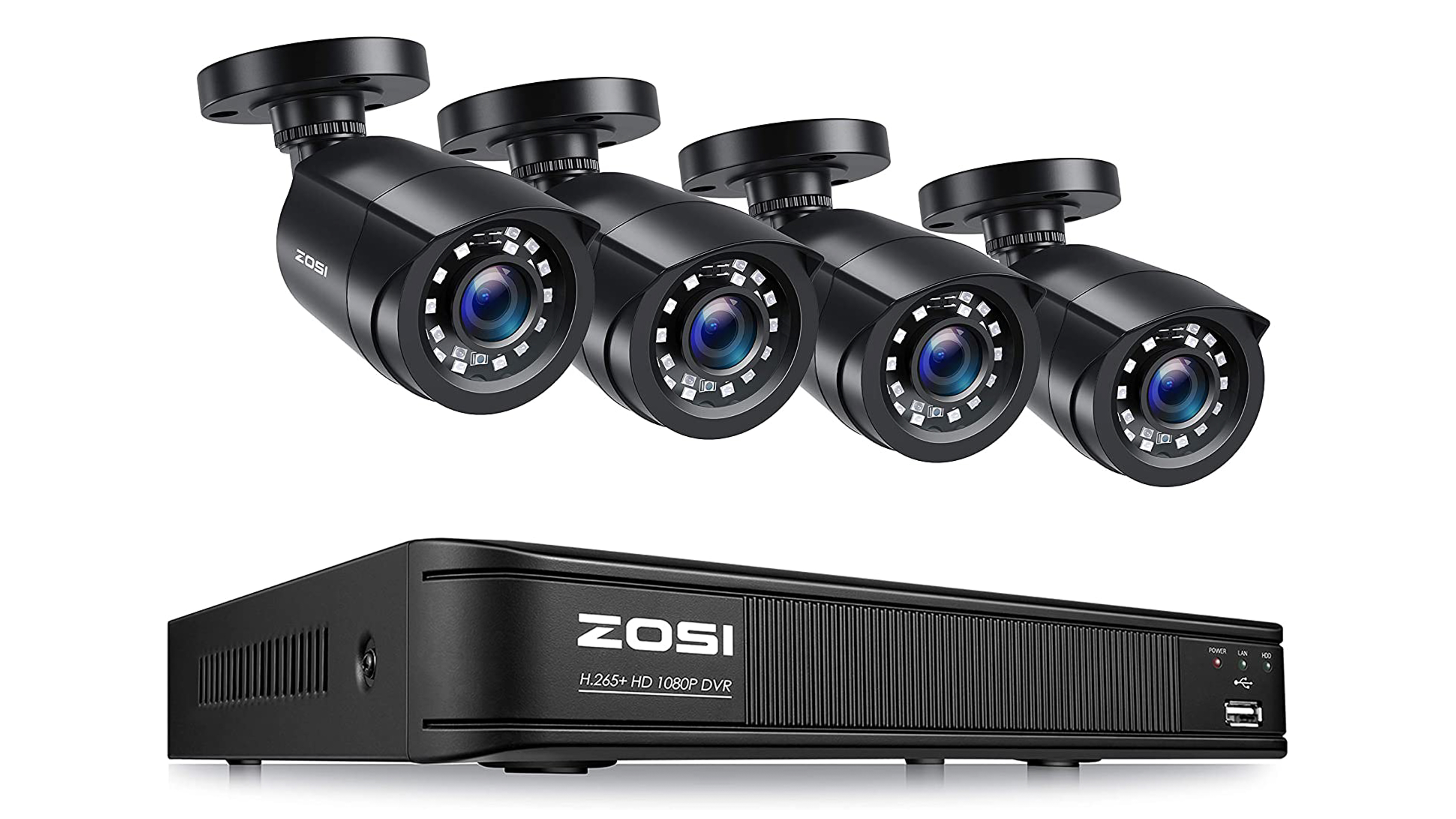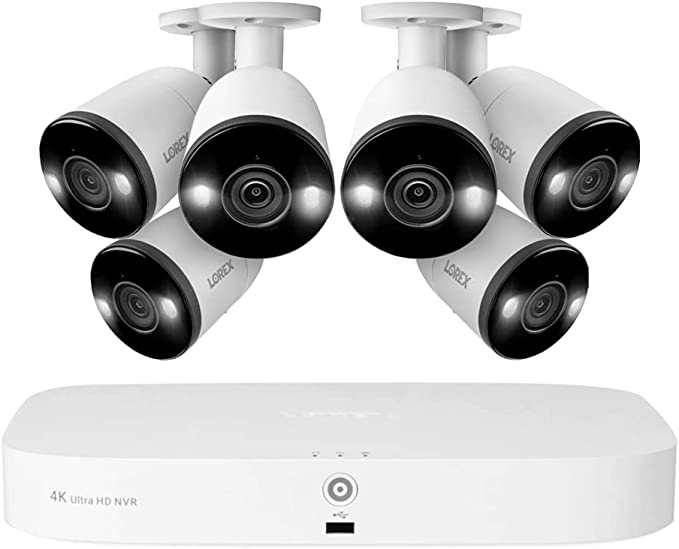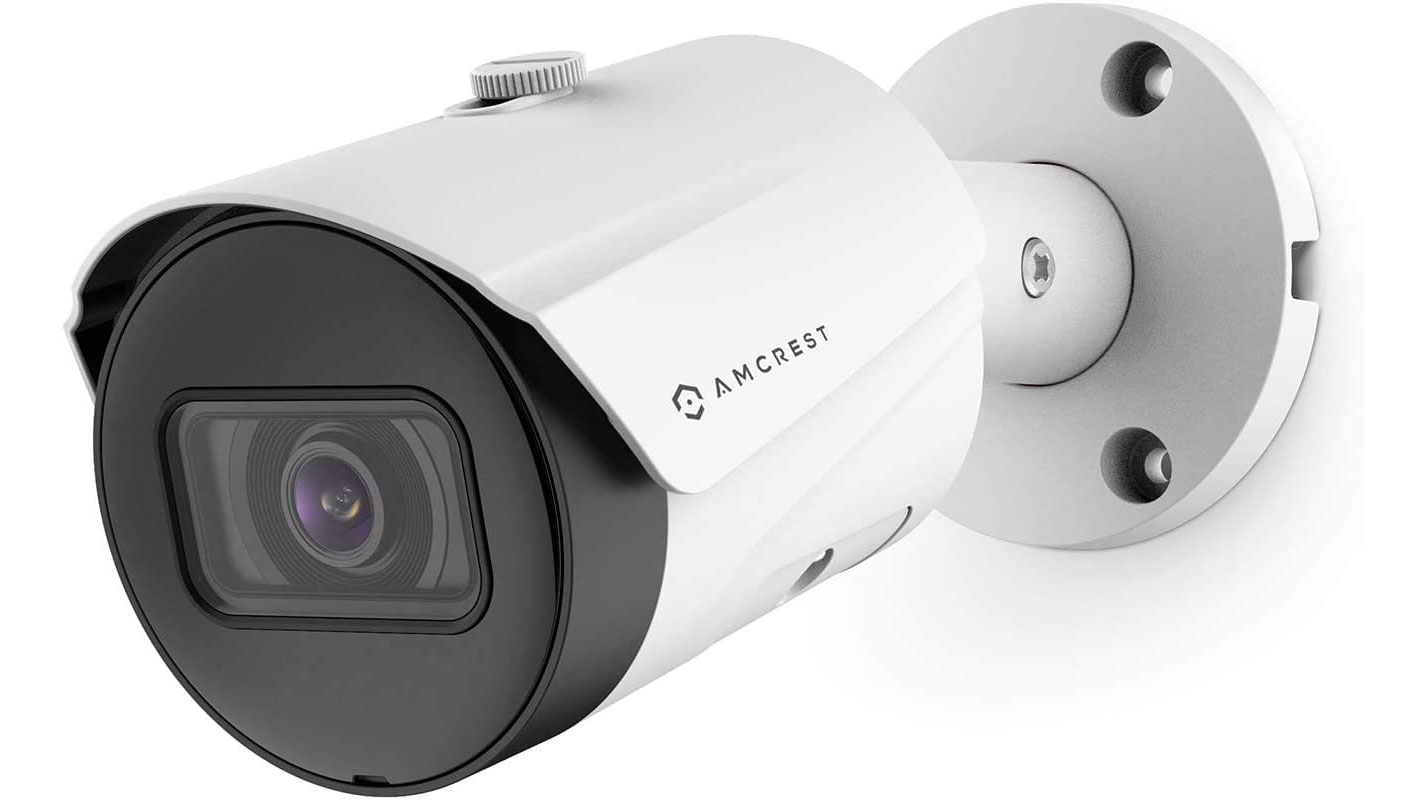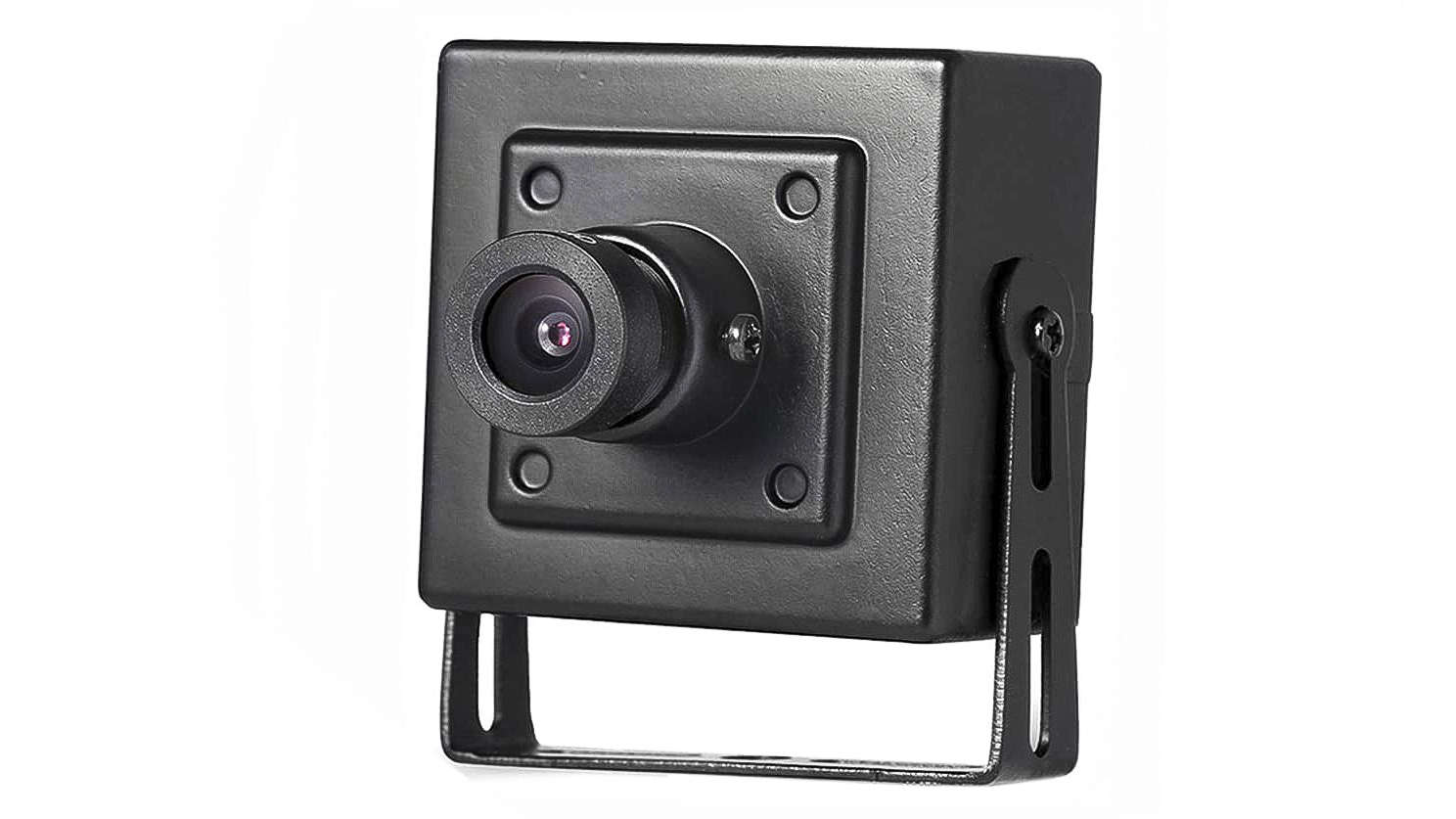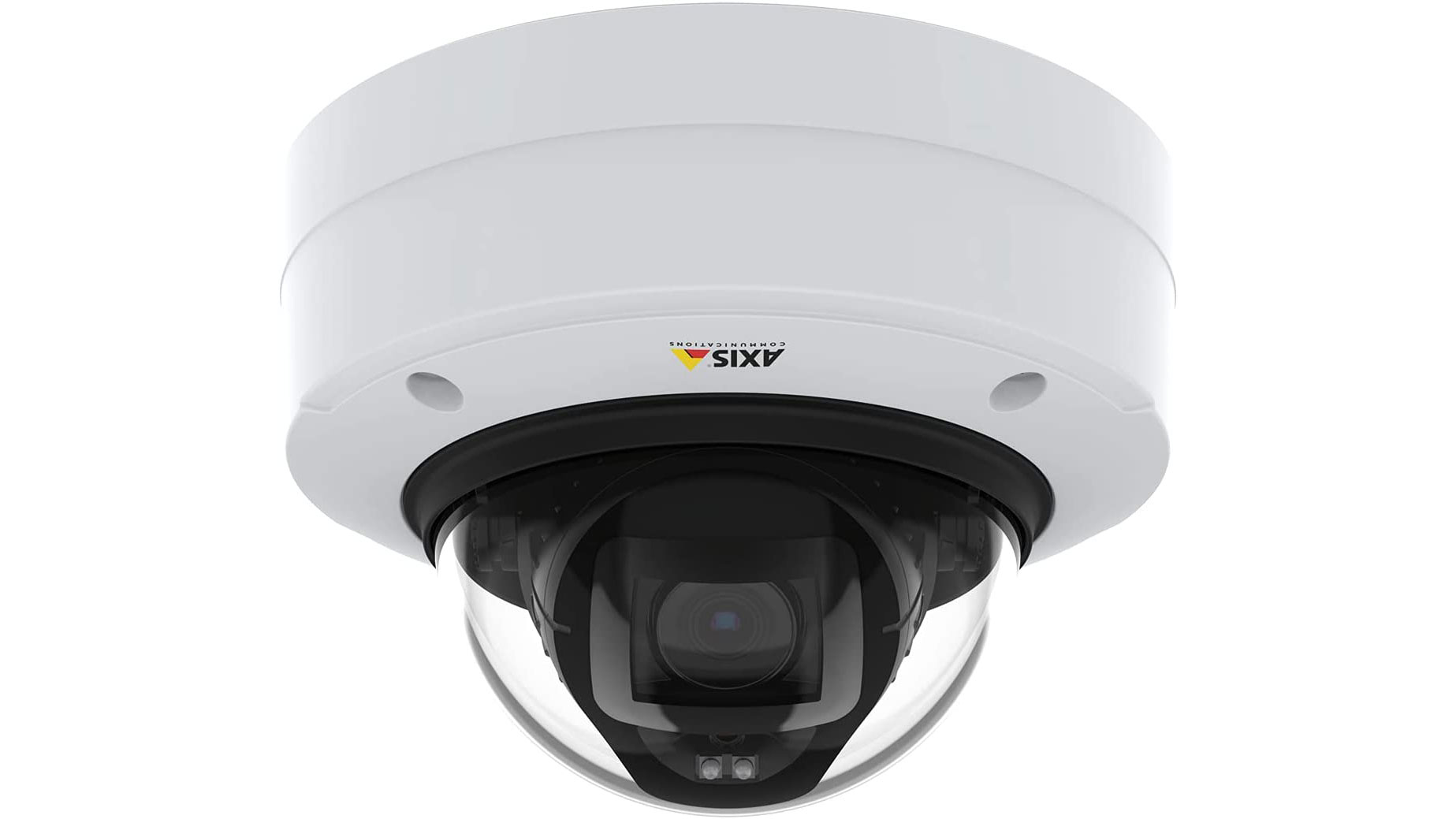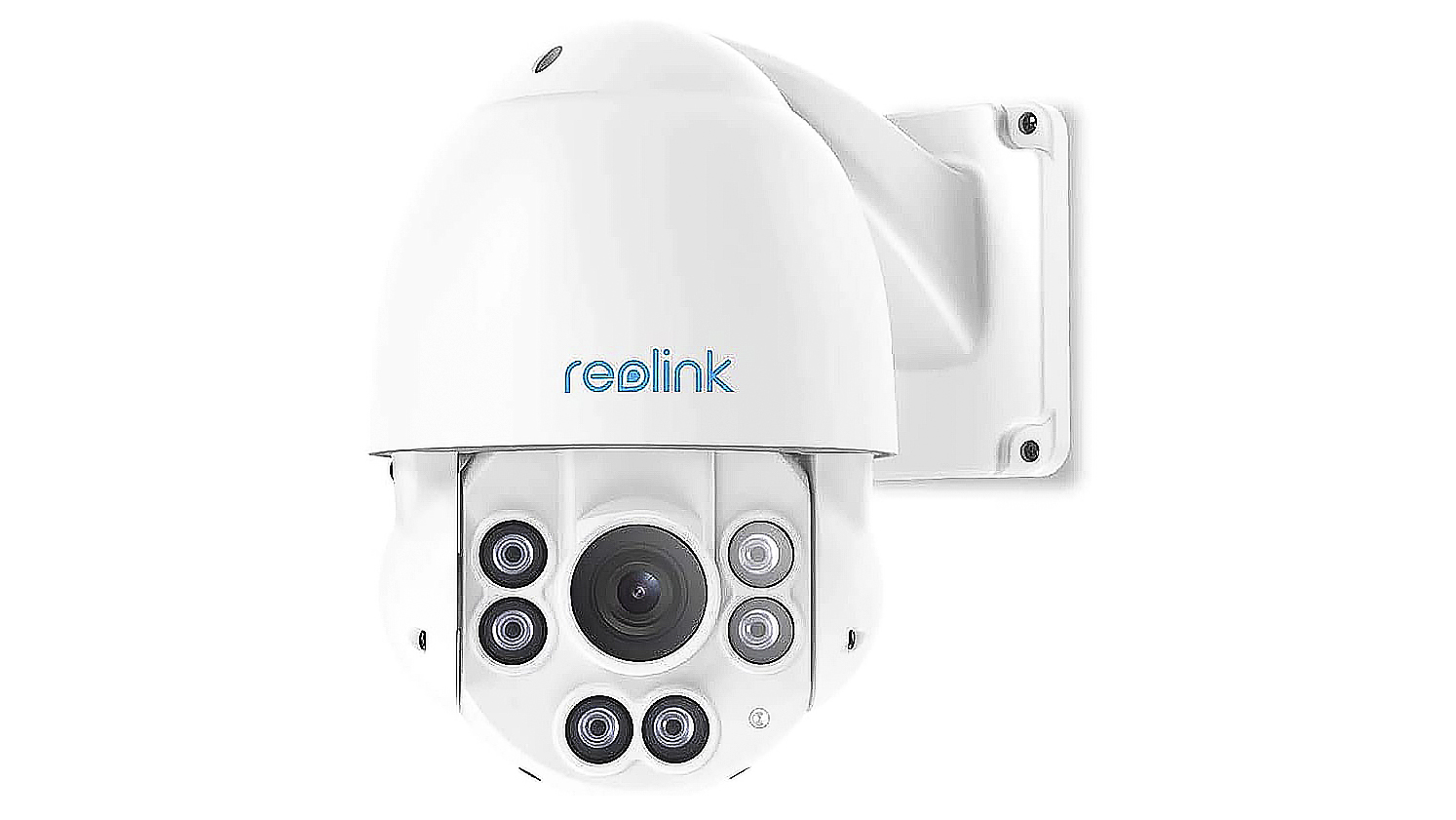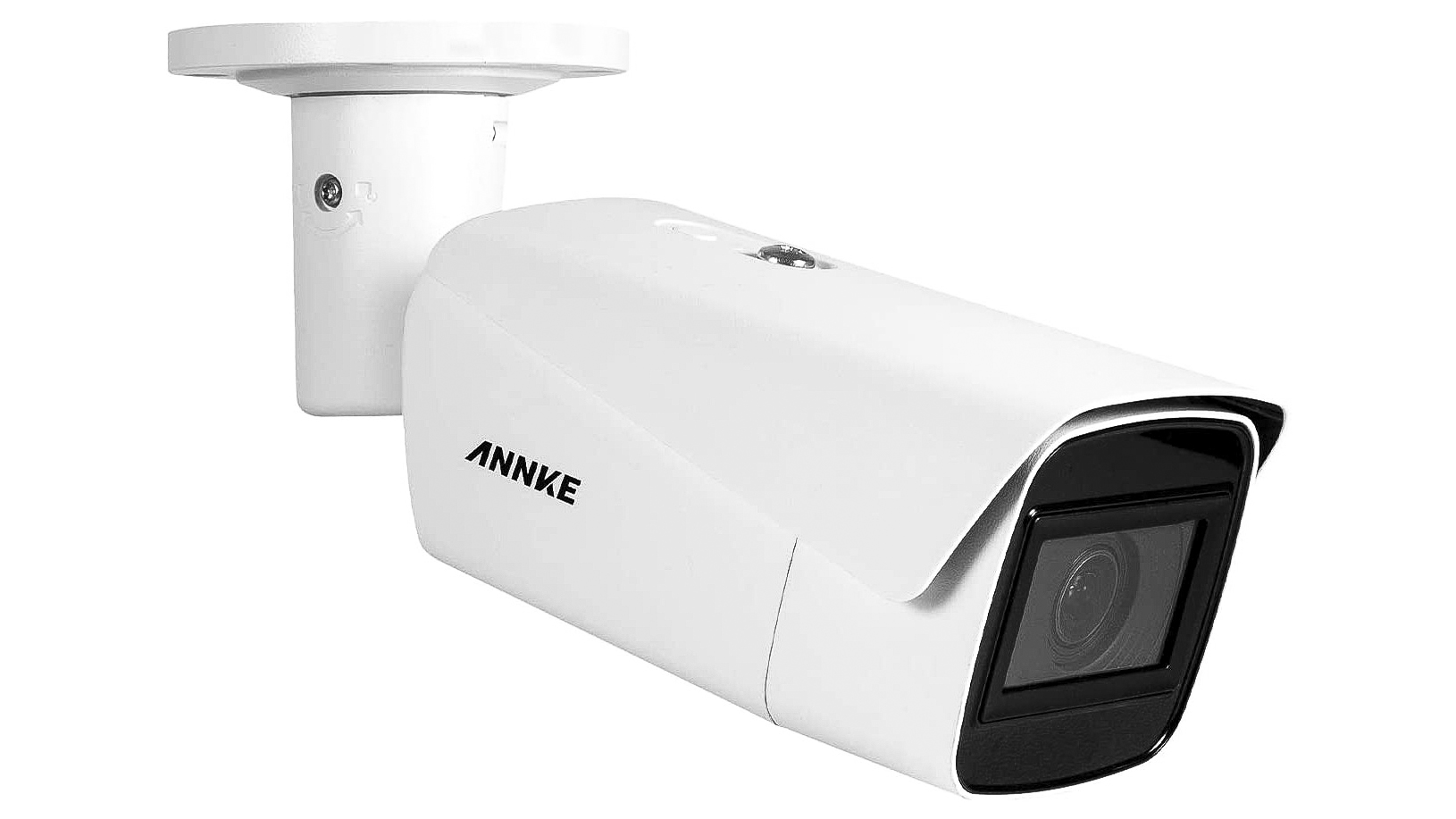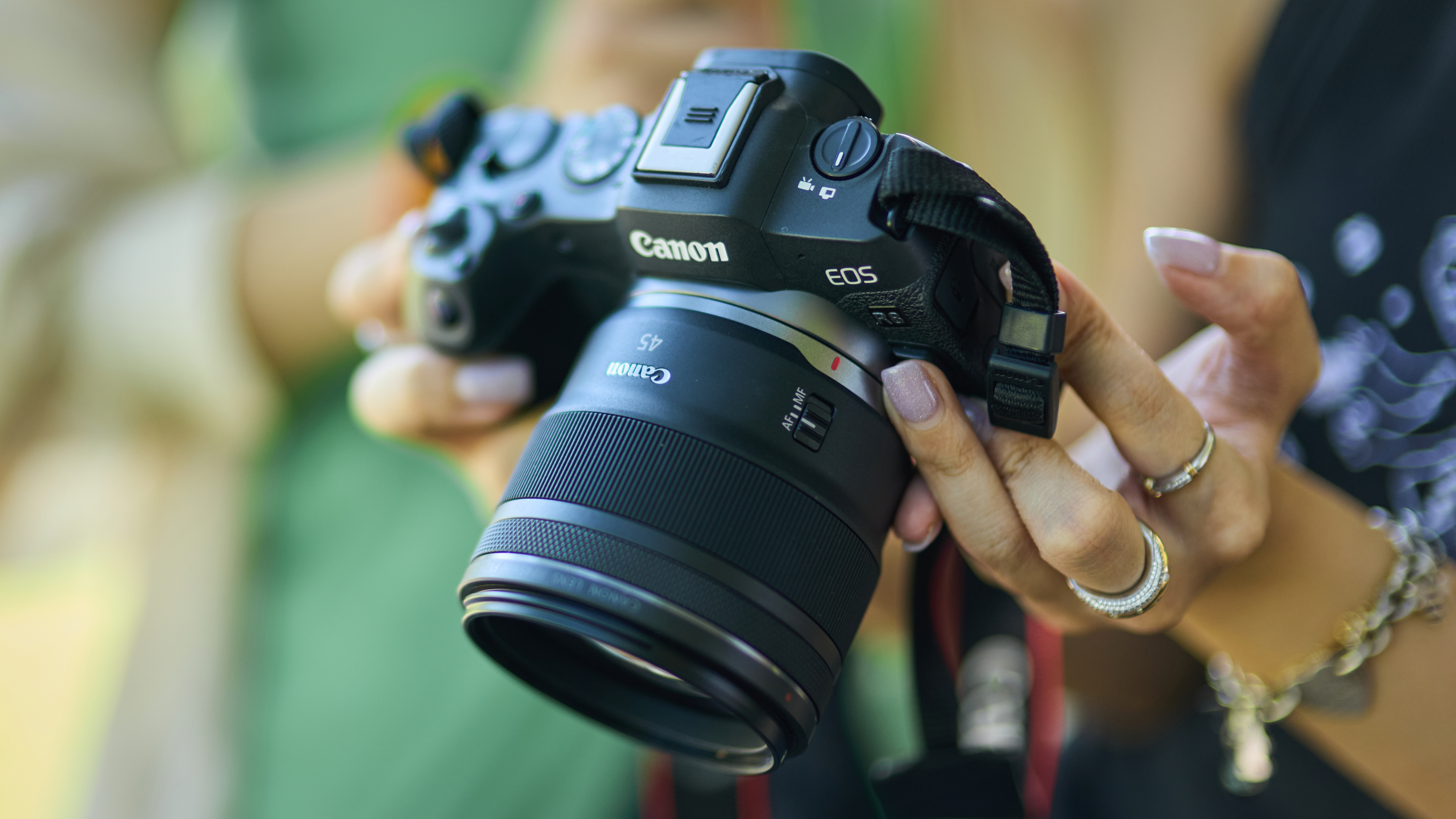The best PoE cameras: the best surveillance camera systems
The best PoE cameras are the answer if you want reliable surveillance cameras which aren’t battery or solar dependent
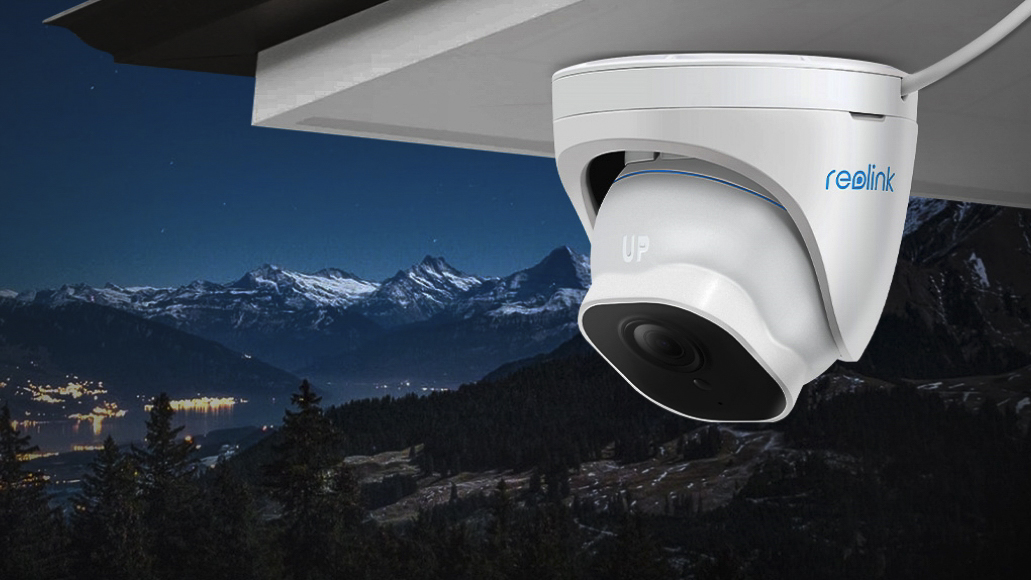
Looking for the best PoE camera or the best surveillance camera system? This guide will help you find the Power-over-Ethernet camera (or cameras) to meet your needs - and help steer you to the best available price.
PoE technology is simpler than older ‘Siamese cables’, while avoiding the need for regular battery charging. The range is limited only by the cable and not thick walls blocking Wi-Fi. An Ethernet cable can carry enough power to operate a surveillance camera and handling digital video via a network is no problem. That’s why a lot of security camera systems are actually low-spec computers built with slightly different priorities when it comes to the ports (quite a lot of LAN sockets for the cameras, VGA or HDMI for the display, and a hard drive, but not too much else).
If you want to break things down into more detail, there is an FAQ below the main list, but the main thing to be mindful of is that this list covers systems – with drives and power boxes – and separate cameras. With a separate camera, you will, of course, need a compatible system.
PoE also covers live streaming, conferencing, and broadcast setups, for which you might prefer to check our best streaming camera and best PTZ camera guides.

Adam has been obsessed with looking at cameras and gadgets for his whole life, and has developed a deep knowledge of special-purpose cameras, including PTZ cameras, webcams and action cams. (He's also our drone expert, and has written several bestselling books including The Drone Pilot's Handbook).
The Quick List
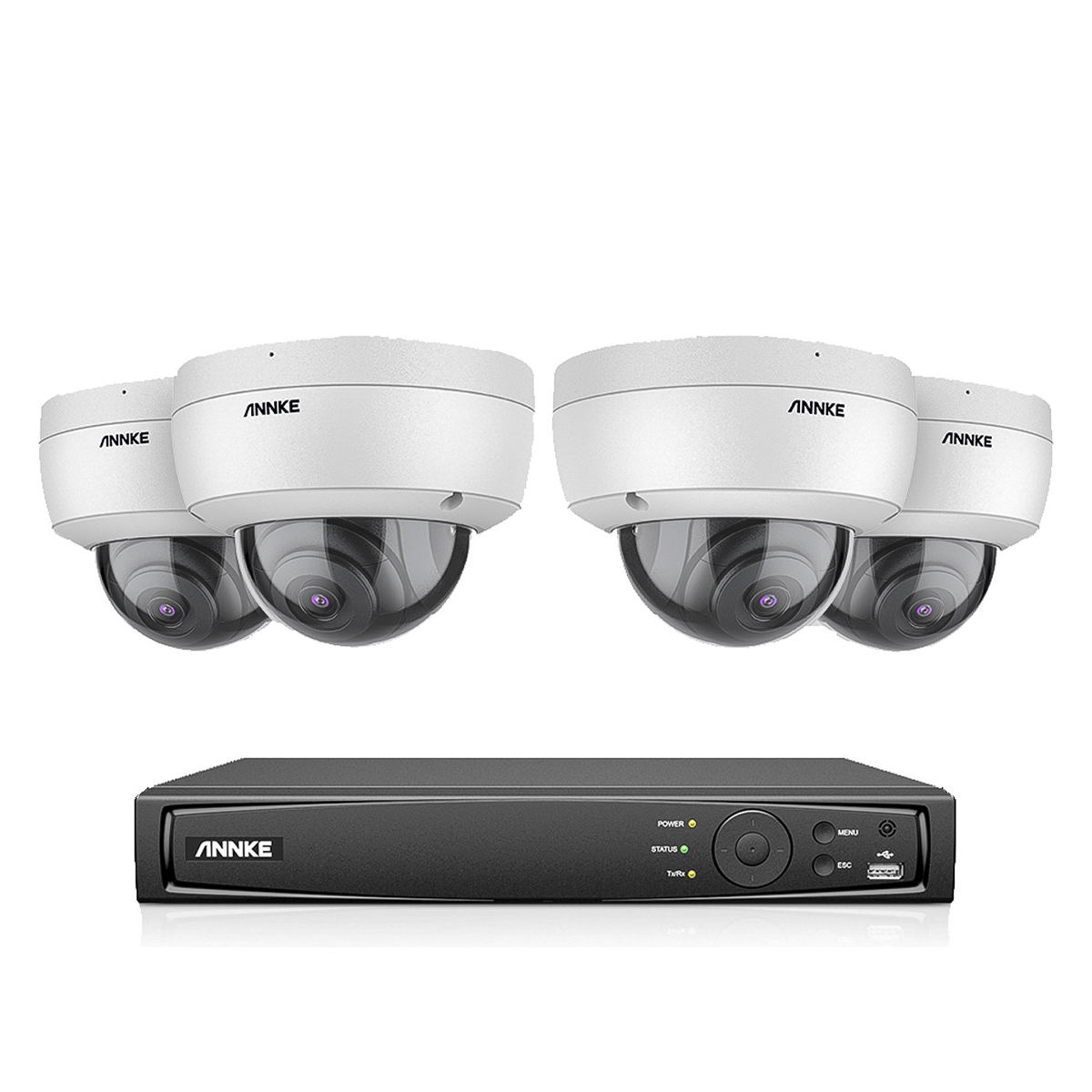
This bundle offers a video recorder and four 4K vandal-proof cameras that work especially well in low light, plus smart alerts. Read more below…
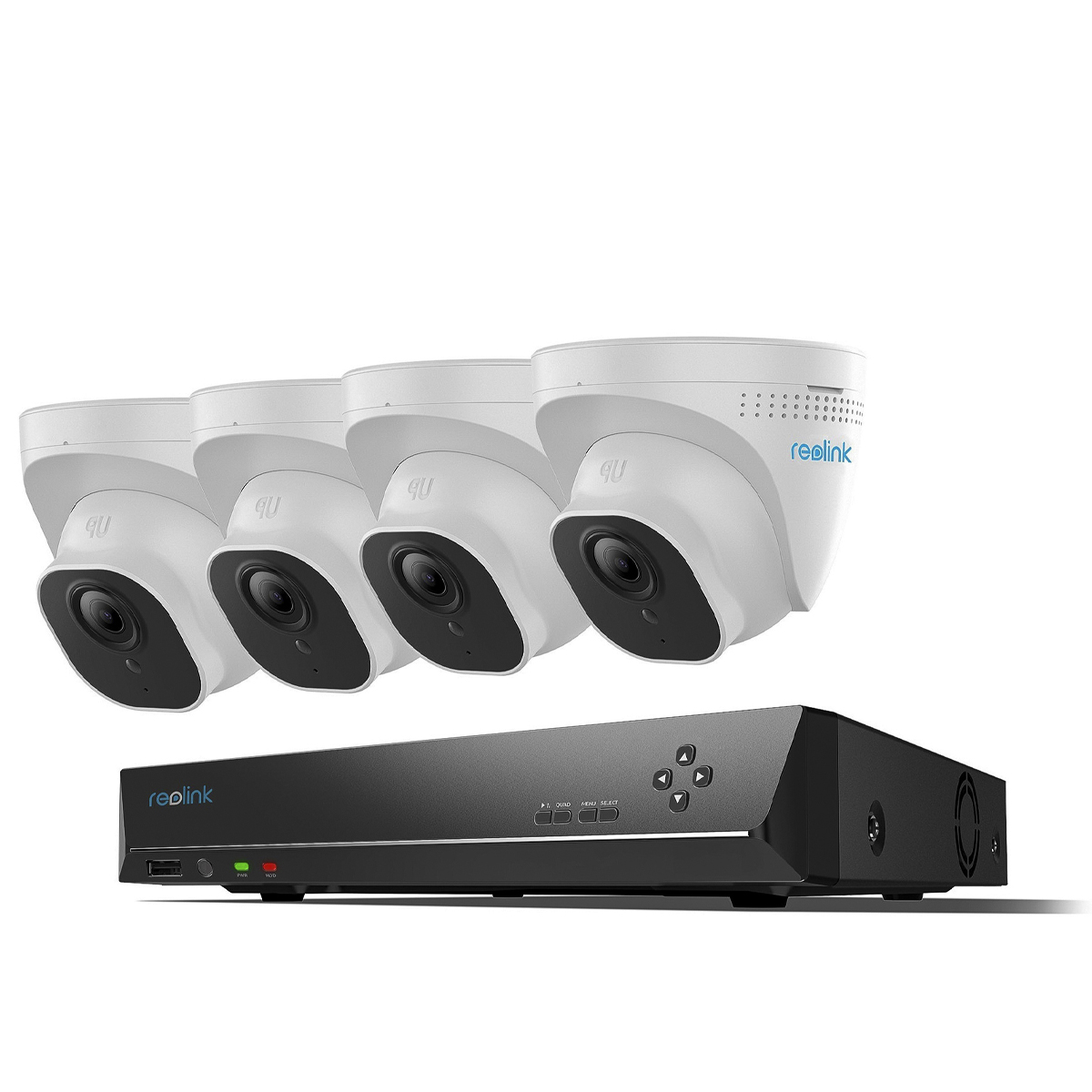
You can expand this four-camera system to record for up to 36 days, and name the cameras to receive personalized alerts. Read more below…
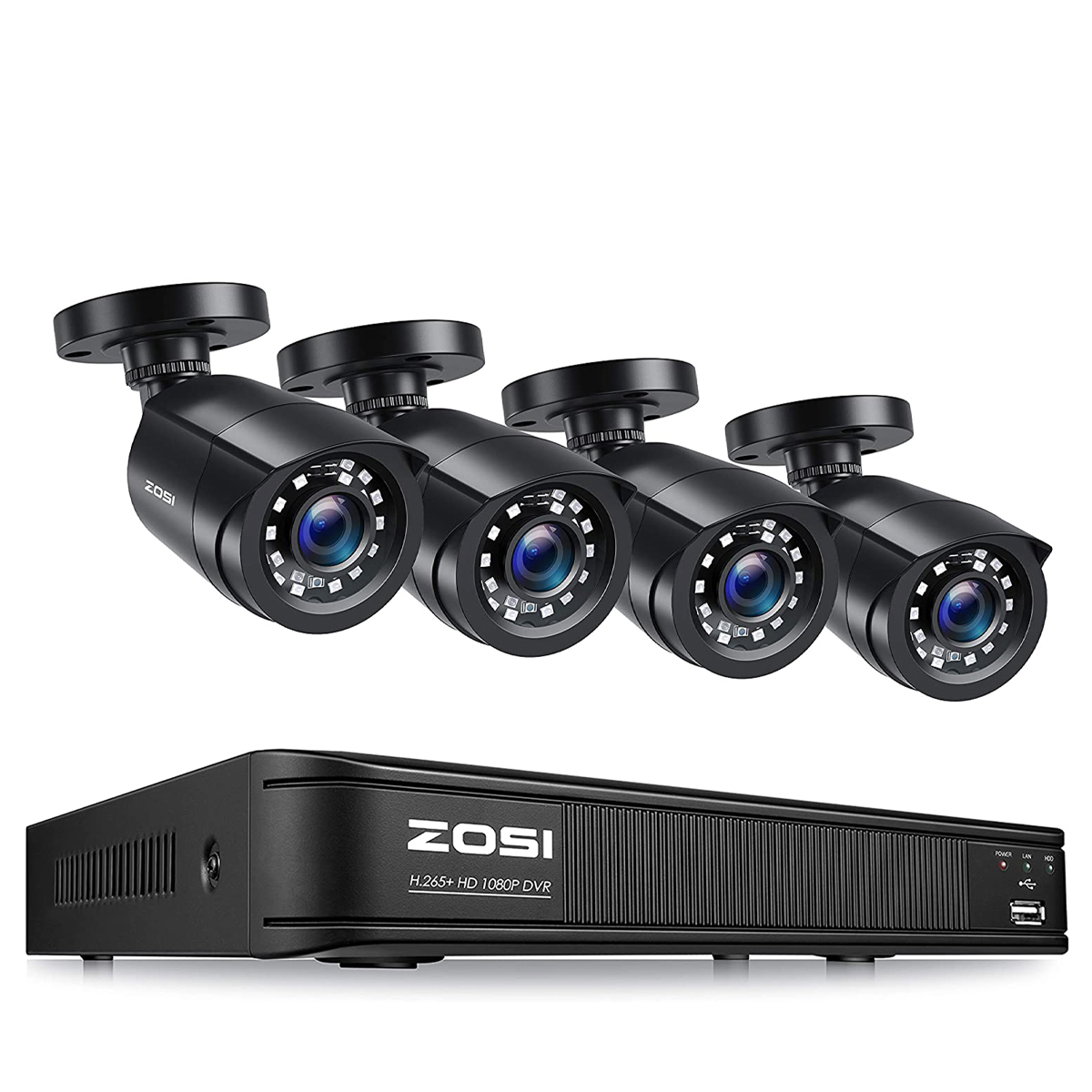
This four-cameras-plus-recorder system costs less than some individual cameras, but offers superior compression and motion alerts. Read more below…
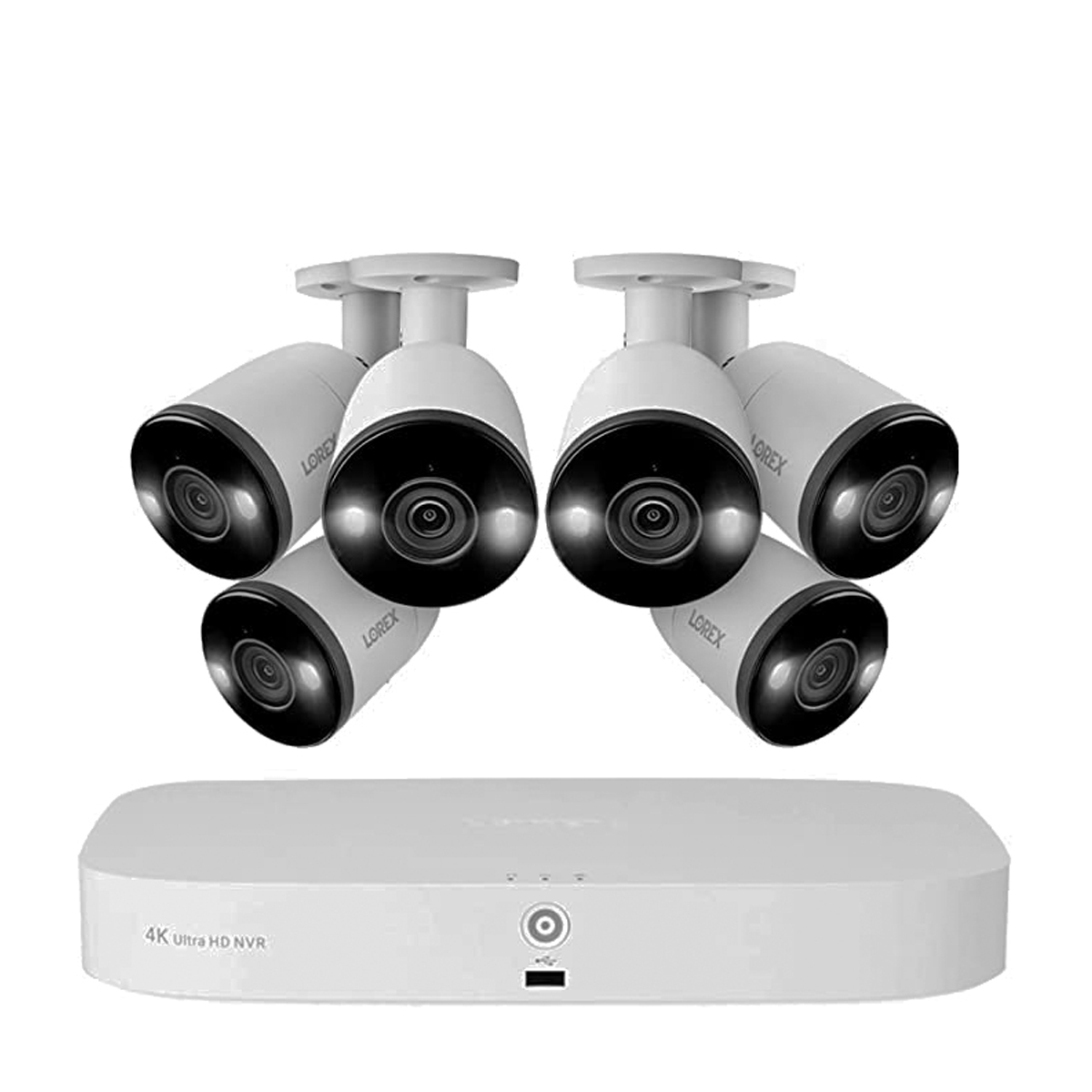
Not only does this recorder bundle come with six 4K cameras, but you can also record from Lorex Wi-Fi cameras and doorbells. Read more below…
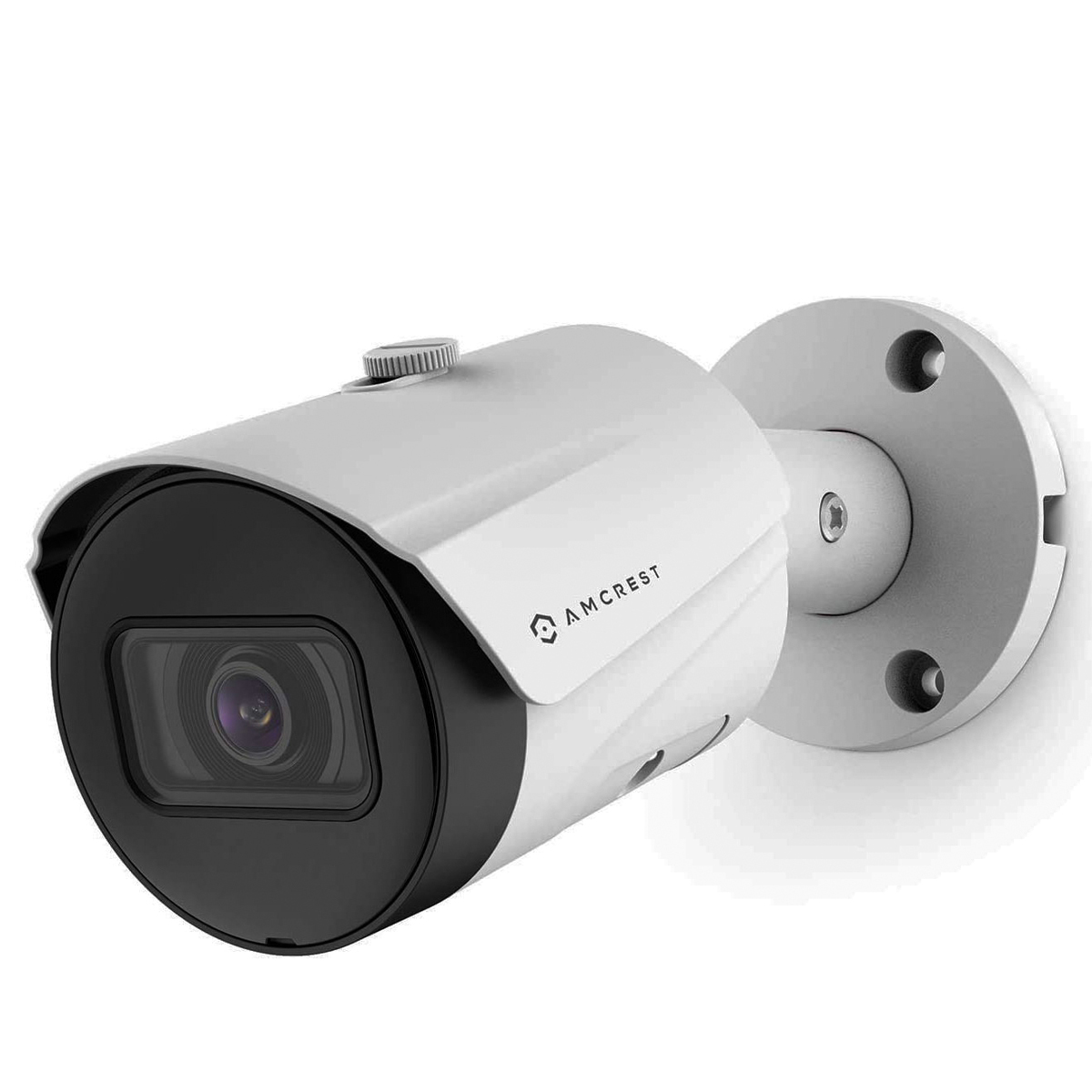
This wide-view camera can feed its video to a web browser, an NVR, a MicroSD card or the cloud – the choice is yours. Read more below…
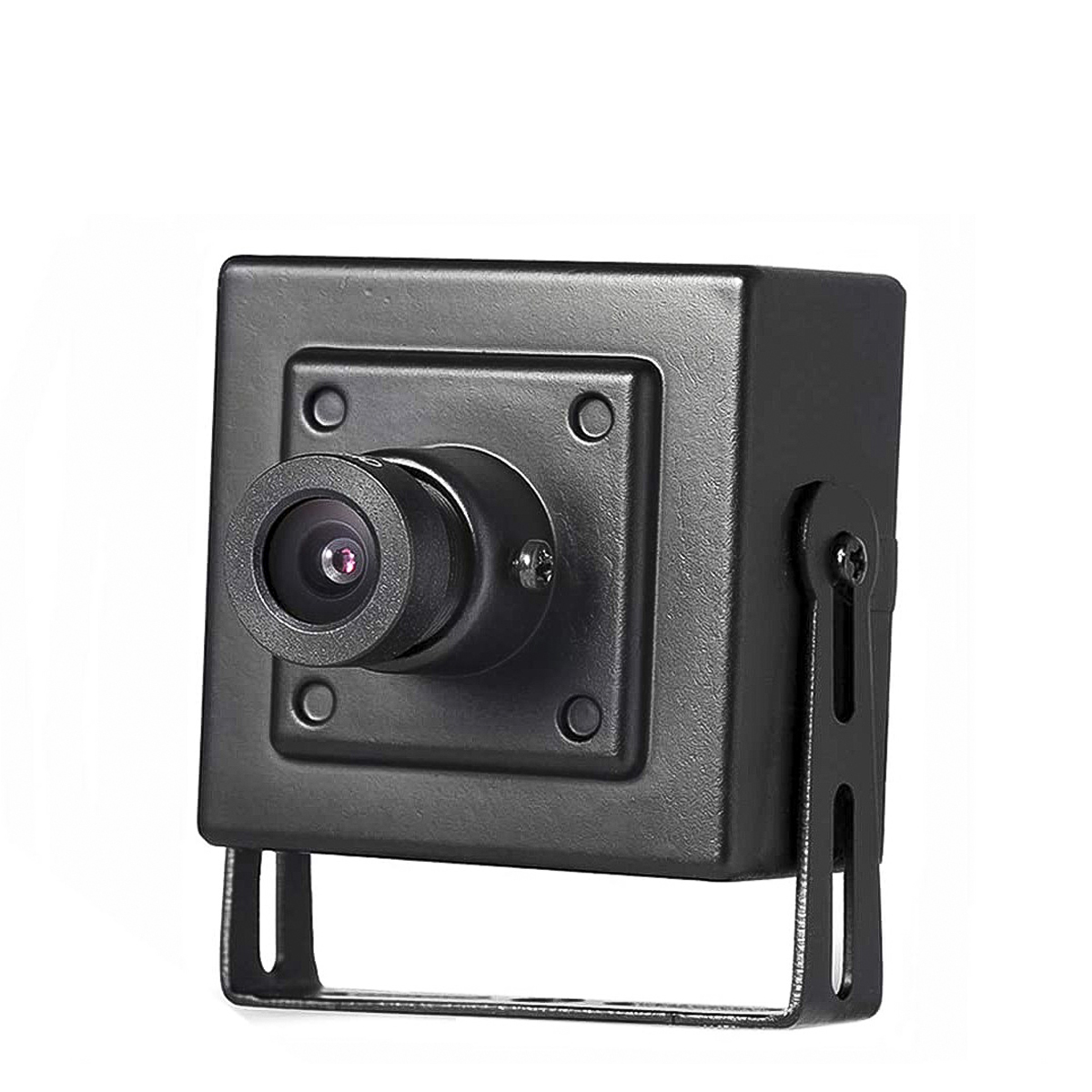
Here’s a great way to get with security cameras: a low-priced model that’s small enough for you to tuck it away indoors. Read more below…
View the full list ⤵
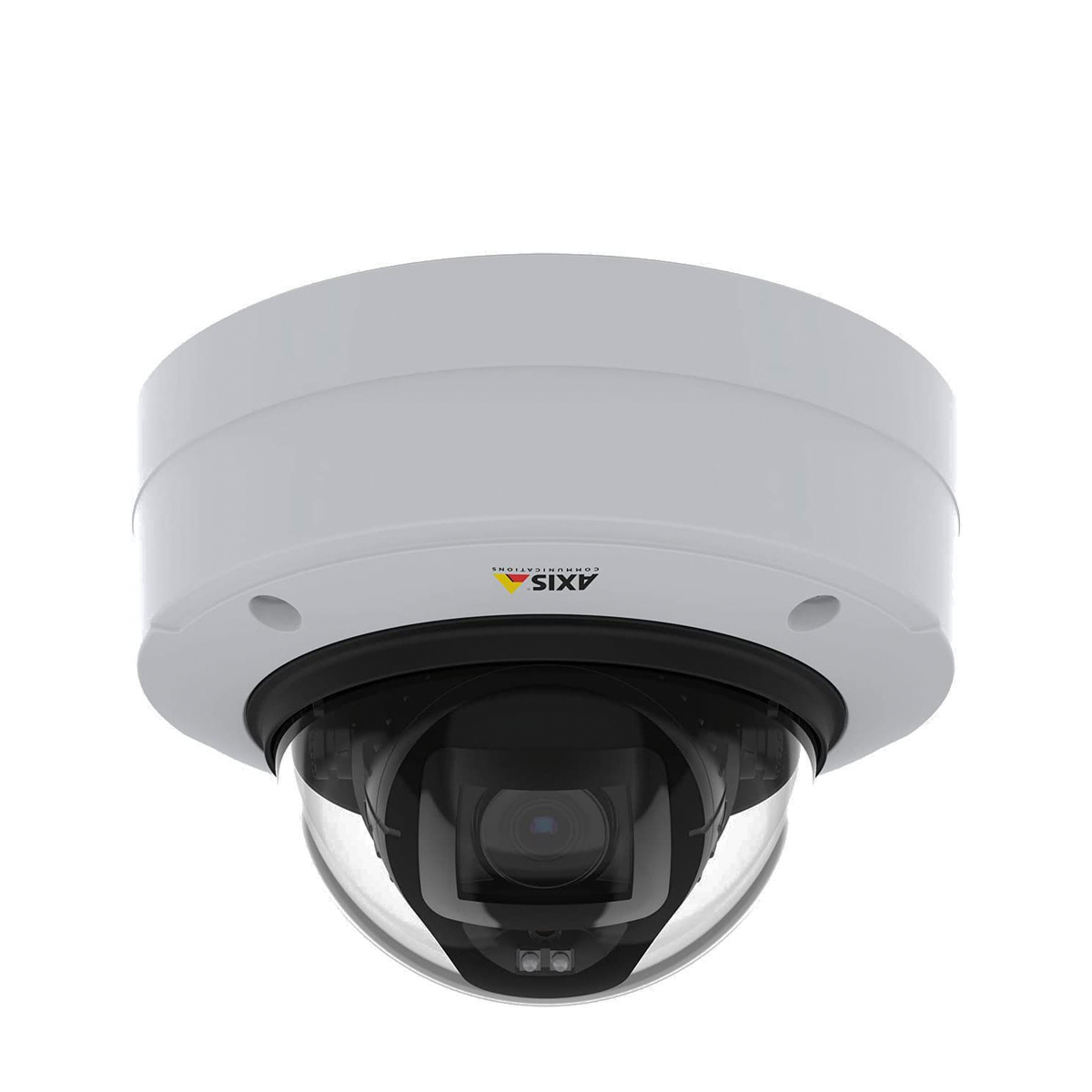
This 4K camera offers exceptional image quality with a wide dynamic range, plus a vast selection of add-on functions to download. Read more below…
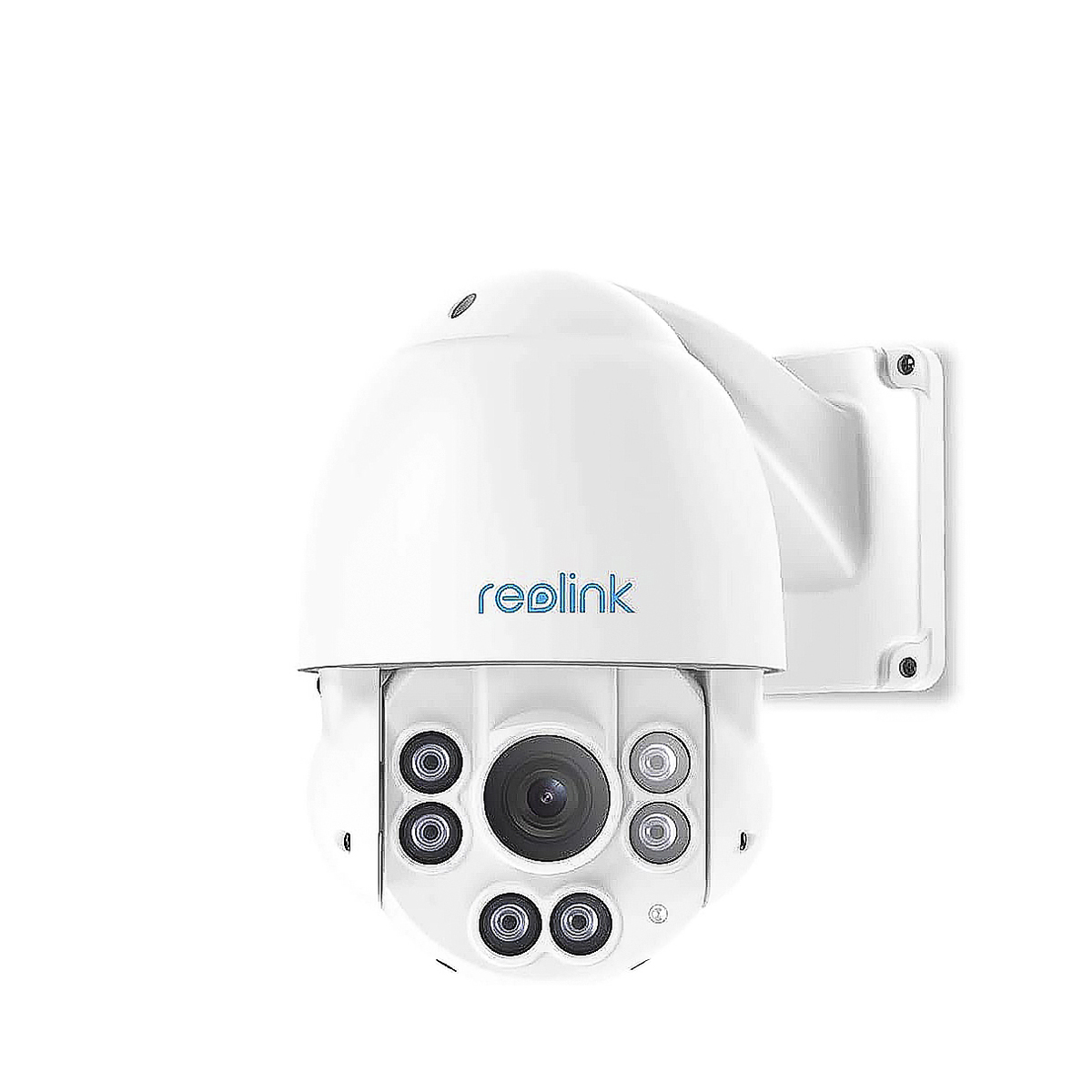
This Pan/Tilt/Zoom camera is an ideal complement to an existing system, enabling you to target a specific area in real time. Read more below…
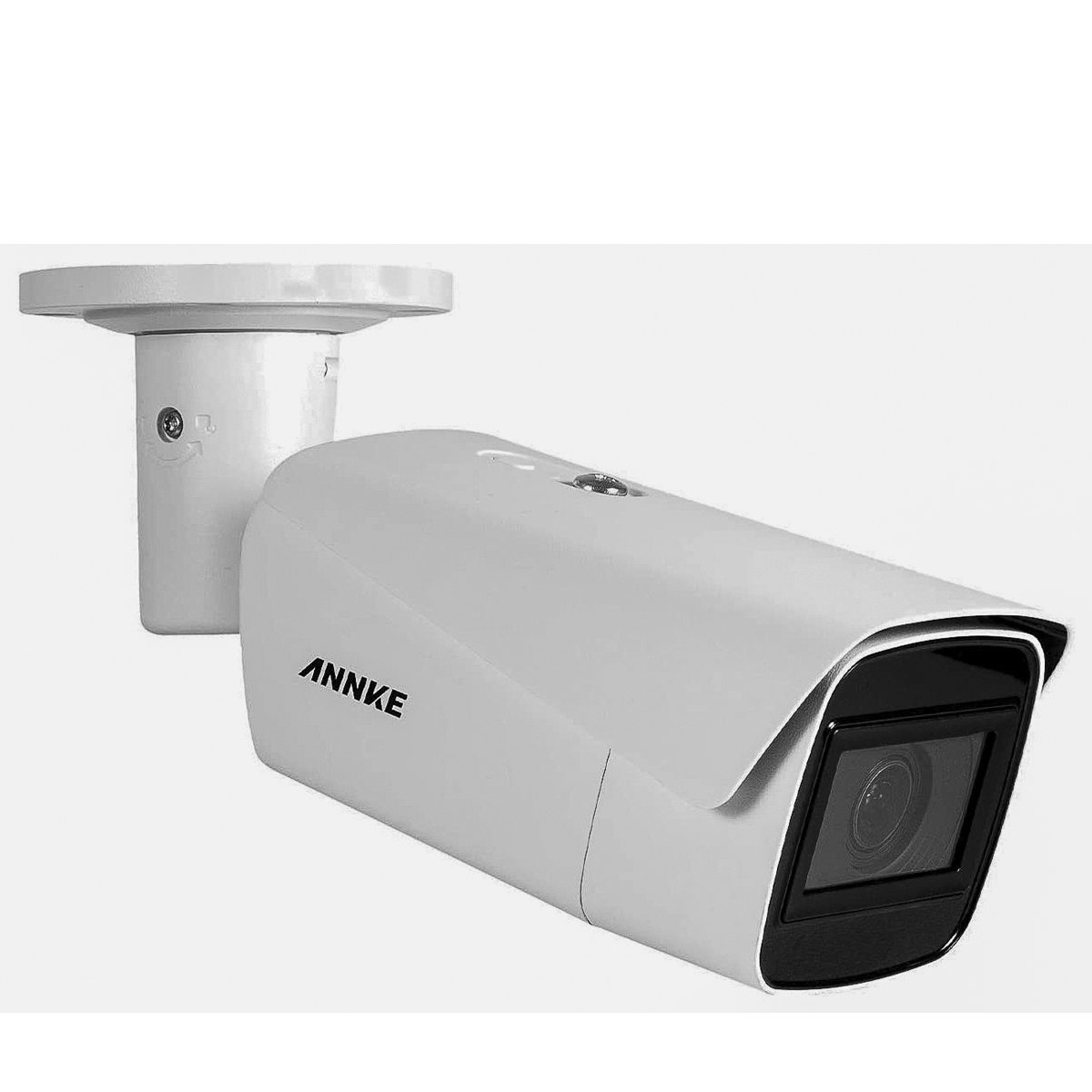
This camera offers terrific image quality, plus AI that detects people, changes in a static scene or signs of camera tampering. Read more below…
Best PoE systems and cameras
Why you can trust Digital Camera World
Best PoE security system overall
1. Annke H800 4K Dome System
Specifications
Reasons to buy
Reasons to avoid
Annke’s H800 eight-channel 2TB network video recorder (NVR) is offered here in a pack with four of the company’s C800 dome cameras. The NVR and cameras also support H.265 4K video compression, audio recording, remote access, and the other features you’d expect, and can connect to up to eight cameras.
The cameras’ 8-megapixel Sony CMOS sensor performs especially well at helping you see into contrasty dark areas, with WDR and digital noise reduction. The 100ft/30.5m range of the cameras’ night vision works in conditions down to 0.01 lux. Each camera is also IP67, built to survive hot (60˚C/140˚F) or cold (-40C˚/-40˚F) for extended periods. The metal construction is IK10 vandal-proof, according to Annke, and the dome can survive the impact of a mallet.
Smart motion alerts allow you to draw customized polygons around areas of a camera's view, for example, your drive or parking space. You can also tweak the sensitivity and disable motion detection by area if you choose, or even add a privacy mask via the NVR.
(UPDATE: Shopping from the UK? I can currently only see this bundle with turret cameras: 🇬🇧 Amazon.co.uk – it offers many of the same advantages, arguably better picture than domes, but slightly less camera protection)
Best smart PoE security system
2. Reolink RLK8-820D4-A system
Specifications
Reasons to buy
Reasons to avoid
With four 4K cameras and 2TB of storage, this camera and NVR combination set is a powerful security system that will give you the power to monitor most properties without further investment – and you have the option to support up to eight Reolink IP cameras if required.
Using the default H.265 video standard, the NVR can record four channels for up to three days at the maximum 8192kbps bit rate. If you feel you need more, you can add 6TB internally (swap the hard drive) and 6TB externally (eSATA socket), for a total of 36 days, so there is plenty of flexibility. Even while you’re away, though, you can monitor what the cameras see via Reolink’s computer client, which works on macOS and Windows or via the web.
The supplied cameras can all detect the difference between people and vehicles. What’s more, you can name cameras, so the alerts you get on your iPhone or Android phone read something like “Person activity is detected by Side Door”. Set it up properly, and you’ll know very quickly when your teens have borrowed the car without asking!
UPDATE: Check out the RLK8-1200D4-A – the 12MP version of this system (that's 4K+) for even higher resolution! It's already up on 🇺🇸 Amazon.com and 🇬🇧 Amazon.co.uk.
Best budget PoE security system
3. Zosi PoE CCTV Home Security System
Specifications
Reasons to buy
Reasons to avoid
The Zosi NVR has the brushed-gold styling of a retro hi-fi component. While it doesn’t offer the latest specifications on the cameras, it is sold as a complete set with 1TB drive and four 1080P cameras for notably less than other setups.
It is no slouch in terms of modern features, either: H.265+ compression is supported so the drive won’t fill up too quickly; and the Zosi app supports motion detection zones and privacy alerts, keeping pace with significantly more expensive systems. There is also a Zosi AVSS client for macOS and Windows.
There is room for expansion, too: the system has eight PoE ports and can handle video up to 5 megapixels should you choose to add higher-definition cameras in the future. This, though, is a good start – and for little more than the price of some Wi-Fi cameras, let alone their subscriptions!
Most flexible PoE security system
4. Lorex Fusion Bundle 4K PoE System
Specifications
Reasons to buy
Reasons to avoid
The Lorex system is a good one not just because it uses true 4K cameras, which results in the luxury of high-quality recorded evidence from camera positions, but because it’s designed to be paired with up to two compatible products like Lorex’s wi-fi cameras and doorbells, so you can store video from these locations too. That gives your overall security system a more complete view.
Moreover, it is recorded as continuous video, even from the added Wi-Fi cameras, onto the included NVR, without the need for a monthly subscription. Thanks to the app, two-way talk is also an option and the on-the-go connection at least matches a Wi-Fi-only camera system.
The included cameras have color night vision and an especially durable metal housing that will survive in weather from -30˚C to 60˚C (-22˚-140˚F), so that ticks of durability and flexibility.
Best PoE bullet camera
5. Amcrest UltraHD IP5M-B1186EW-28MM
Specifications
Reasons to buy
Reasons to avoid
The B1186EW is a classic bullet camera – a shape that acts as an effective deterrent as well as a good camera housing – and in this case returns a crisp 5-megapixel image that can be viewed on a web browser or an NVR.
The relatively wide field of view gives you the option of installing the camera with prevention in mind, but still monitoring a relatively broad area without the cost (and extra mechanics) of a PTZ system. Night vision is achieved through infrared and a low-lux image sensor and the 5-megapixel image offers a sensible balance between the data storage requirements of 4K and the lower resolution of 1080P.
We also liked the capability of storing video to an onboard MicroSD and can appreciate that might like Amcrest’s entirely optional cloud service.
Best budget PoE camera
6. Revotech Mini
Specifications
Reasons to buy
Reasons to avoid
If you want to start experimenting with PoE cameras, the tiny Revotech Mini is ideal. The tiny 30mm square, supplied with an adjustable-angle bracket, can be connected to a system as easily as most other PoE cameras, but costs somewhat less, and can be tucked away even more subtly if you want to use it indoors.
The casing has been used by other manufacturers, meaning there is a good supply of accessories; Revotech offers the camera with a 6-22mm telephoto (see at Amazon) allowing you to position the camera at a good distance from your target. It’s worth remembering, however, that this modestly priced accessory requires manual focusing – a PTZ camera might be more appropriate for serious security situations, as well as being more of a deterrent.
The NVSEE app the firm offers is available for both iPhone and Android, so real-time viewing of the camera’s feed is easy. You might well find this camera is all you need – it supports some extras to the ONVIF Profile, like motion detection.
Best PoE zoom camera
7. Axis P3248-LVE
Specifications
Reasons to buy
Reasons to avoid
This camera offers significantly better image quality than many competitors, thanks not only to 4K but also to carefully optimized imaging algorithms that steer clear of excessive sharpening or contrast, but do support a wide dynamic range.
Axis’s AI can be set up not only to detect motion in specific areas, but to monitor behaviors like loitering. Indeed the Axis might be a bit much for the average install, given that you can install apps to extend the already extensive functionality; Axis’s gallery has over 100 functions such as license plate recognition.
We couldn’t leave this off the list, though, because – despite the price – the varifocal lens (optical zoom) combined with color and infrared night vision makes for an exceptional camera, one that also boasts multiple video streams and can record to a local MicroSD card. It might be pricey, but it certainly gives you options!
Best PoE PTZ camera
8. Reolink 5MP PTZ
Specifications
Reasons to buy
Reasons to avoid
Choosing a Pan/Tilt/Zoom (PTZ) camera isn’t an ideal solution for all CCTV situations: if you are leaving a system recording, the camera can only be pointing one way at any one time, and it might well cost a similar amount to position several fixed cameras more strategically.
If you already have a system, however – especially one which uses smart alerts to draw your attention to suspicious activity – a PTZ camera has a lot of appeal as a means of finding out more before you take things to the next level.
Reolink’s app-eal (sorry) comes in part from the control over the device, which can easily be exercised via the company’s app. Other features, like two-way audio, are there too – just as they are in the firm’s less powerful Wi-Fi PTZ camera – but the 5x optical zoom will let you see more. Timelapse and flexible recording modes can also be fun for photographers capturing sunrises.
Best smart PoE camera
9. Annke C800 4K Zoom Bullet Camera
Specifications
Reasons to buy
Reasons to avoid
This is an incredibly versatile system that takes advantage of a Sony EXIR image sensor and 4x optical zoom – backed up with a 2.8-12mm varifocal (motorized) lens – for spectacular image quality that is still color in light levels as low as 0.018 lux.
This means a single camera can cover a large area while looking broadly like any other bullet camera to a passerby (it’s slightly bigger than some), and the field of view can be changed remotely on demand or by a timed program.
The camera includes all of Annke’s behavior analysis and AI systems. These include human recognition, to avoid pet or leaf movement alerts; scene change detection, which looks for specific actions like crossing lines, intrusion into defined areas, leaving areas and object removal; and defocus detection, which can alert you to camera tampering and can even be linked directly to the alarms.
The system even has a pricier sister 12K model (the Annke B1200) that can spot unattended luggage, meaning the British Transport Police tagline “see it, say it, sorted” is getting close to being solved by bots.
Honourable mention
Ring Stick Up Cam Elite: The PoE cam for the Ring system
If you have been checking out the best outdoor security cameras, and can really see the appeal of a monthly subsctiption for cloud-based storage of your security footage (plus a few other advantages, like AI tracking and Alexa integration) then it may interest you to know that Ring does offer a camera which works with PoE. It certainly isn't the cheapest offering, but if you have already gone to the effort of running powered Ethernet cables for security cameras, then you'll be reluctant to switch to the inconvenience of running USB power leads (or, worse still, regularly changing batteries) for the sake of switching to Ring. So, for the best of both worlds (arguably), look for one of the Ring cameras with the Power over Ethernet (PoE) adapter.
How to choose the best PoE security system
PoE – Power Over Ethernet – is a system that channels power and data over the same computer networking cables. If you want to add Power over Ethernet to your existing computer network, you can. Depending on how your computers are set up at home, you might be familiar with the basics of computer networking, or you might just leave everything to Wi-Fi.
It’s common to have a cable modem (where your internet connection comes from) of some kind connected to a Wi-Fi router, but the modem doesn’t need a router at all. It’s possible that this router will have additional Ethernet sockets (but these are rarely PoE type). You might link these to devices that need more reliable connections – perhaps a TV or games console.
You can add additional connections using a box called a “switch”, and this is where you’ll need to find a PoE-capable one if you want it to power your cameras. Moreover, you should ensure it is powerful enough for the cameras you select; different PoE-capable switches have higher total amounts of power (a Watt budget) they can make available to devices like PoE cameras. Basic cameras are typically happy at 15W per port, while HD cameras prefer a little more.
What is the difference between PoE and Ethernet?
PoE and standard Ethernet use the same cables. Each is a bundle of smaller wires, and PoE uses two of the lines to carry low-voltage direct current power. That means a device connected to a PoE system only needs one cable for power and communications.
What kind of cable do I need for PoE?
Regular RJ45 connectors are used for normal and PoE networks, so, in theory, Cat 5E, Cat 6, and other cables will work just fine. Cat 6 is better as the thicker cables dissipate heat. To be absolutely sure the cable you get is PoE-ready, test it for resistance.
How do I add PoE to my network?
You can either get a router which supports PoE, and a network switch which does. Ethernet cables can be connected directly into these and draw power from them (make sure there is enough total wattage for all your devices). Alternatively you can get a PoE injector for each device, which separates the power and Ethernet parts of the cable.
What to look for when buying PoE
- Understand your objective – PoE is a very flexible system, used in security cameras and live streaming systems. Know what you need.
- Will you be replacing your power supply? – If you're installing cameras, make sure you already have, or will be getting, a suitable source of PoE power. If you're not buying in a bundle, check the number of watts each camera needs and the total output of your router or network switch.
- Cable runs – It is possible to buy reels of Ethernet cable and cap it yourself, or to buy ready-made lengths. If you choose prepared cables don't forget you'll need to fit the whole RJ45 plug through any holes you've drilled, not just the cable.
- Compression systems – Any camera you're adding, not just wired, and it is important to check the video compression format to ensure compatibility with your NAS or NVR.
- Camera features – Don't forget to look at camera functionality like resolution, and any built-in night vision.
- Camera style – Will turret or bullet shape better suit your purposes?
How we test security systems and cameras
We have a test facility with wired and wireless cameras, and endeavor to try camera systems in a real environment, connected to a real network. We have set up different lengths of Ethernet and PoE, and test cameras at night and day. We sample systems in an appropriate setting like a real home, over a few days or weeks, to confirm promises about things like camera AI and system reliability.
Find out more about how we test and review on Digital Camera World
The best camera deals, reviews, product advice, and unmissable photography news, direct to your inbox!

With over 20 years of expertise as a tech journalist, Adam brings a wealth of knowledge across a vast number of product categories, including timelapse cameras, home security cameras, NVR cameras, photography books, webcams, 3D printers and 3D scanners, borescopes, radar detectors… and, above all, drones.
Adam is our resident expert on all aspects of camera drones and drone photography, from buying guides on the best choices for aerial photographers of all ability levels to the latest rules and regulations on piloting drones.
He is the author of a number of books including The Complete Guide to Drones, The Smart Smart Home Handbook, 101 Tips for DSLR Video and The Drone Pilot's Handbook.
